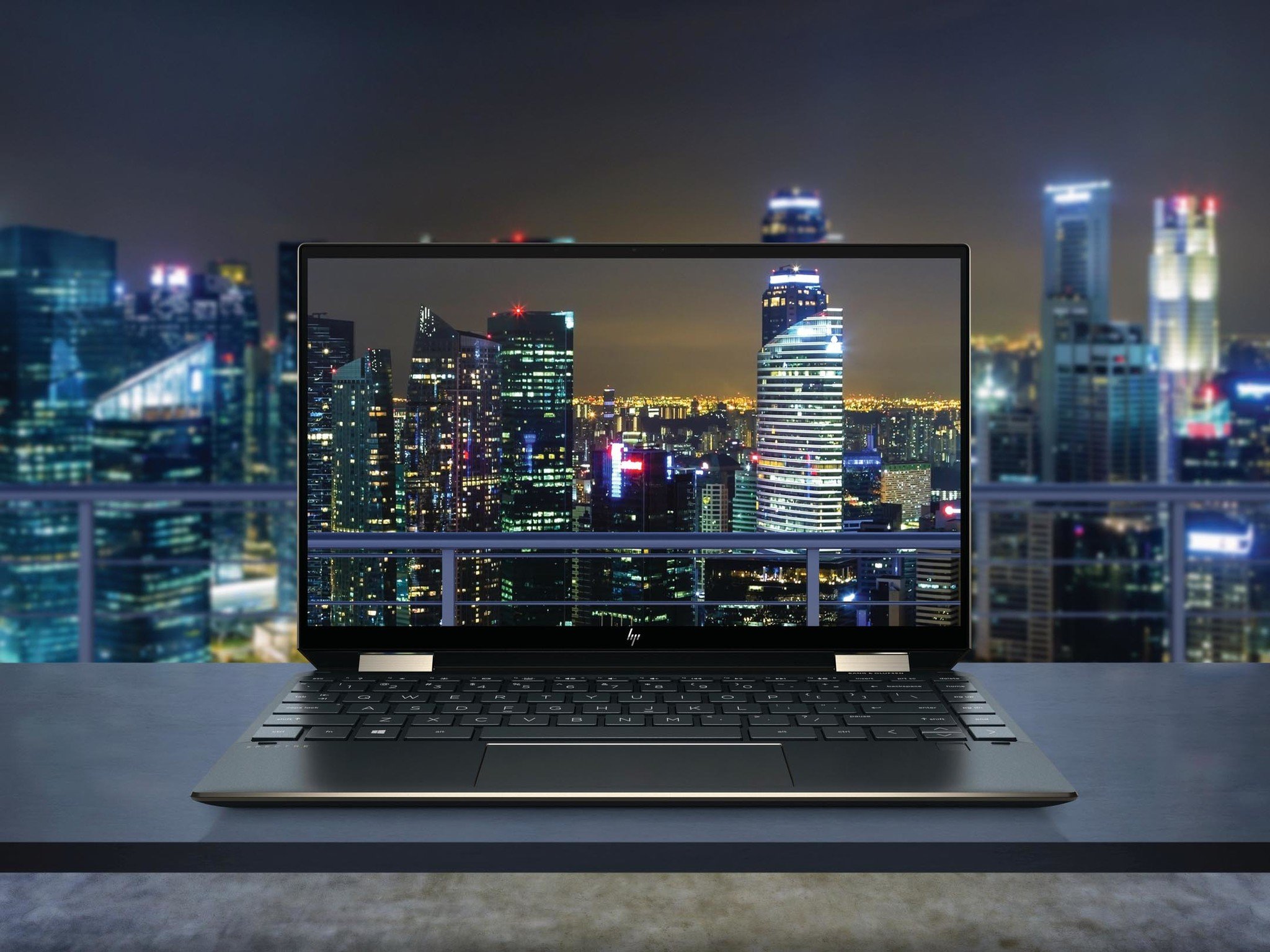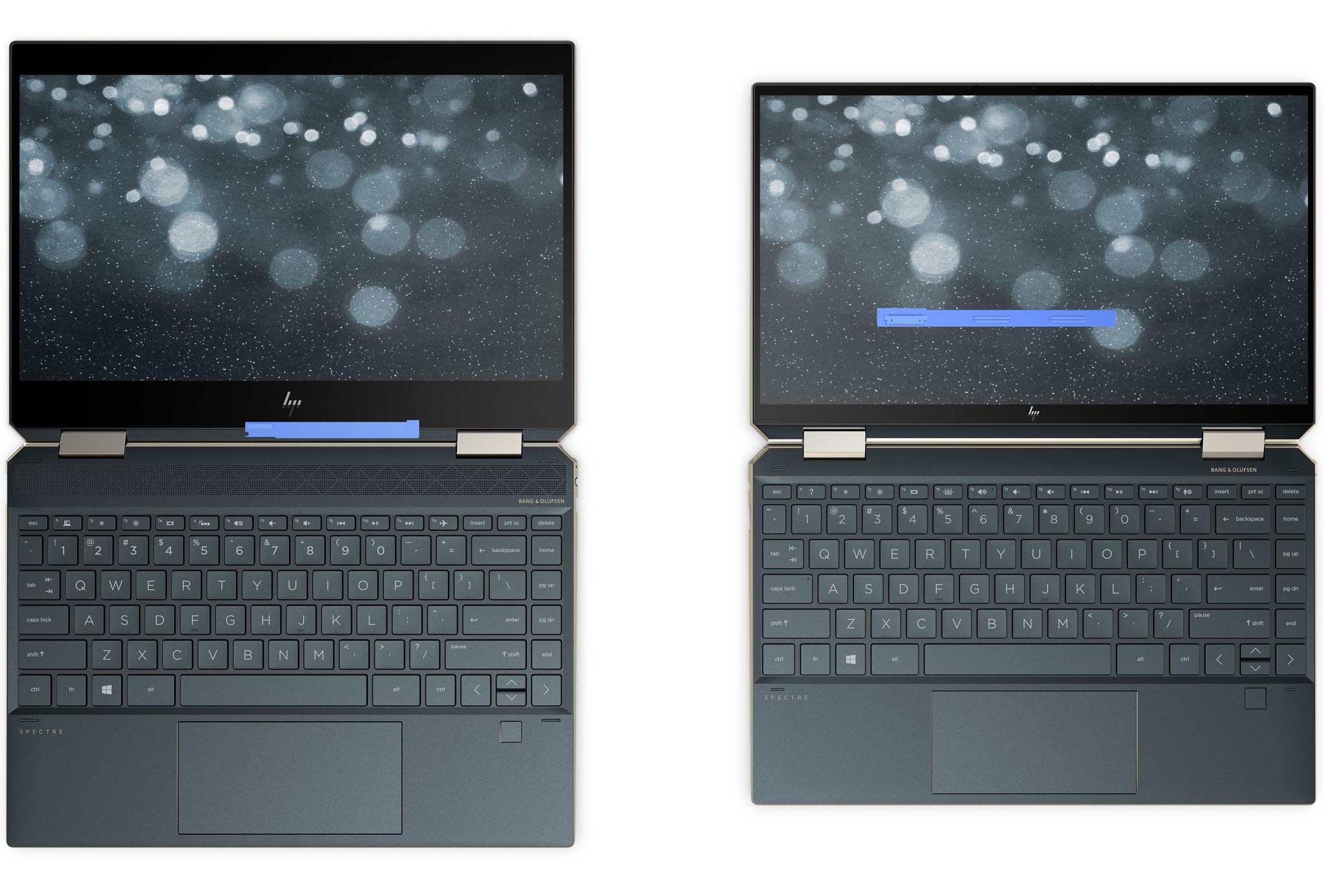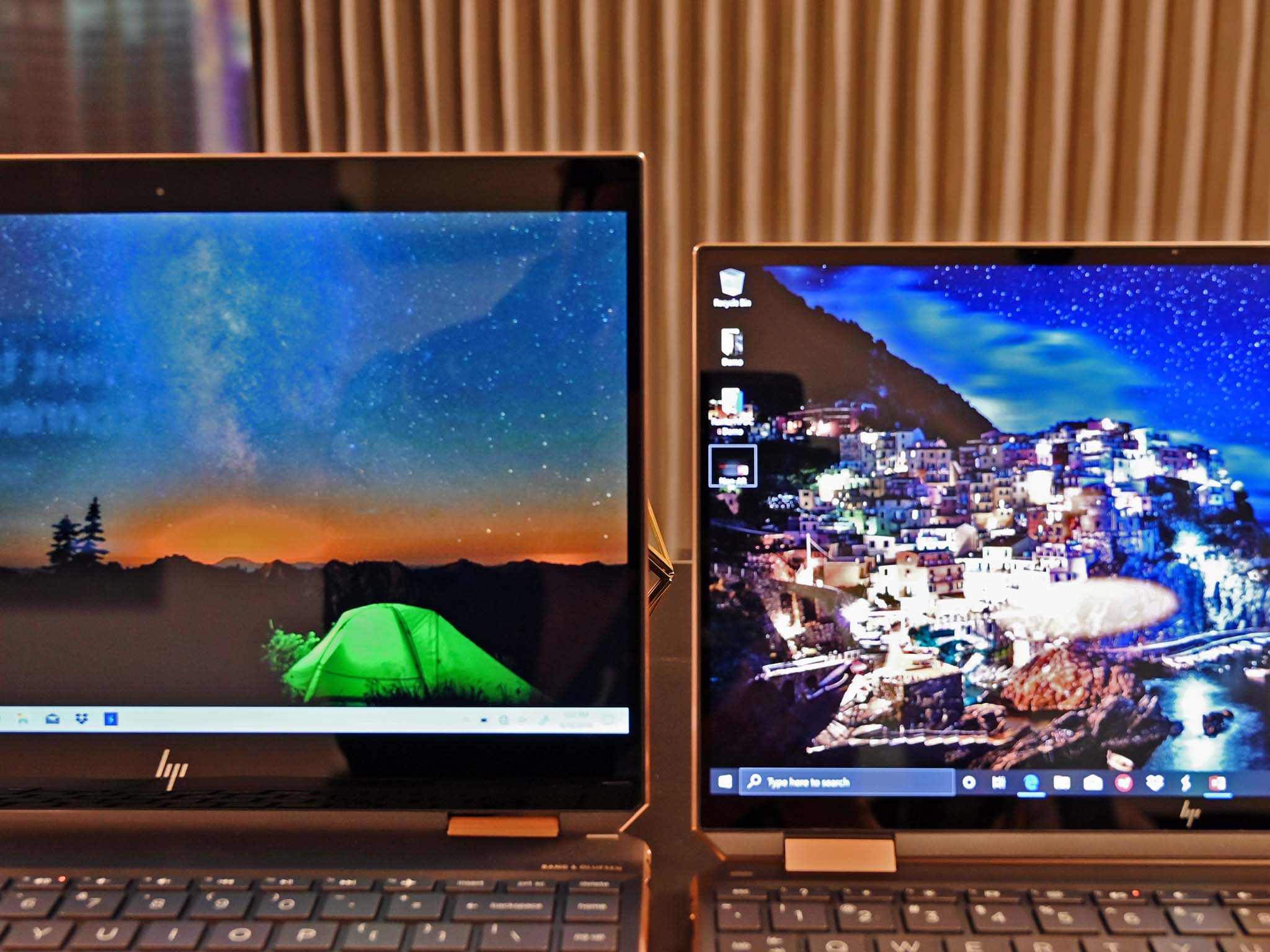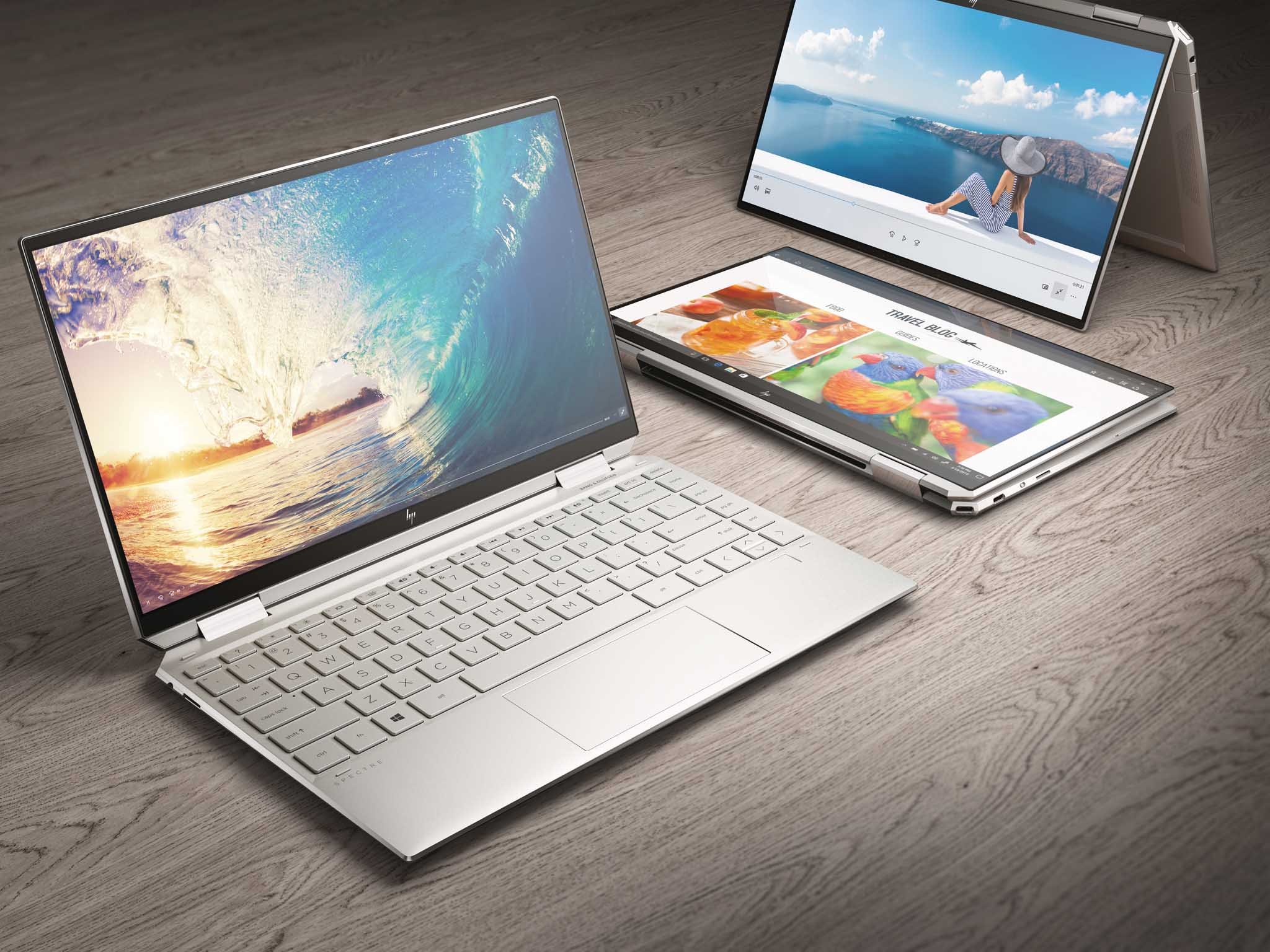HP Spectre x360 13 gets major refresh with tiny bezels, 4K OLED
The latest Spectre x360 13 fixes all our past complaints and goes beyond our hopes.

The HP Spectre x360 13 has long been one of our top recommended convertible laptops, but there have been two lingering issues that kept it from being perfect: no Precision touchpad, and those thick bezels. HP not only fixed that with the late-2019 edition of the Spectre, it did so much more.
Besides getting Precision drivers, HP shrunk the bezels. They're now just 6 mm, down from 17 mm. That gives the Spectre a new 90 percent screen-to-body ratio. They're so thin HP had to invent a new micro web camera for it. The camera doesn't make any sacrifices though as it still supports full Windows Hello infrared (IR) and is located on the top bezel.

They fixed almost everything
The HP Spectre x360 only had a few things keeping it from greatness, and now those things are here. Microsoft Precision touchpad drivers, 4K AMOLED display with anti-glare, 4G LTE, new 10th Gen Intel processor, and a massive 60 percent reduction in bezel size could make the all-new Spectre x360 13 the best convertible ever.
What's new with the Spectre x360 13

For the first time, HP is offering a 4K AMOLED panel with new anti-reflection glass technology. The display supports DCI-P3, sRGB, and Adobe RGB presets with every display factory calibrated. It's simply stunning and the first 13-inch AMOLED we have seen in a laptop.
With 23 mm shaved off, the new Spectre is also significantly smaller than last year's model. The battery size is the same as last year's, however, at a beefy 60WHr. The new Spectre x360 13 weighs just 2.9 lbs (1.3KG), the same as the previous version.
| Category | HP Spectre x360 13 |
|---|---|
| OS | Windows 10 Home |
| Display | 13.3 in, 16:9 aspect ratio Full HD 300 Nits 4K UHD AMOLED 400 Nits |
| Processor | 10th Gen Intel Core i7-1065G7 |
| Graphics | Intel Iris Plus |
| Memory | 8 or 16GB LPDDR4-3200 |
| Storage | 512GB or 1TB SSD and 32GB Intel Optane |
| Pen | Yes, active (included) |
| Expandable storage | Micro SD reader |
| Front camera | HP TrueVision HD IR camera |
| Security | Windows Hello IR, fingeprint |
| Connectivity | Wi-Fi 6, Bluetooth 5, 4G LTE (optional) |
| Ports | Two USB 3.1 Type-C with Thunderbolt 3 One USB 3.1 Type-A HDMI 2.0 DisplayPort 1.4 |
| Audio | Bang & Olufsen with dual speakers |
| Battery | 60WHr 65W AC adapter |
| Dimensions | 12.08 in (W) x 7.66 in (D) x 0.67 in (H) |
| Weight | 2.88 lb (1.3kg) |
| Colors | Dark Ash or Silver |
| Availability | Expected October 2019 |
There is one downside we found with the late-2019 edition of the Spectre. HP had to remove the top-firing speakers due to lack of space on the top deck. Instead, there are two on the bottom. While a shame, it's the only sacrifice made in what is all wins so far.

New 10th Gen Intel quad-core processors with Iris Plus graphics dramatically improve performance. HP also jumped from one to three heat pipes to keep it all cool. There are now extra air intakes in the top keyboard deck (behind the keys) to allow more airflow, which is creative.

Wi-Fi 6, Bluetooth 5, and optional 4G LTE (nano and e-SIM) with 4x4 antennas keep you always connected. There's a new network booster app that lets you combine LTE with Wi-Fi use at the same time to increase your throughput. If you use a Type-C Ethernet dongle you can even combine Ethernet, Wi-Fi, and LTE into one single data-gobbling stream.
All the latest news, reviews, and guides for Windows and Xbox diehards.
For ports, you still get two Type-C with Thunderbolt 3, one Type-A with a drop-jaw to save space, HDMI 2.0, micro SD reader, and DisplayPort 1.4.
Security and privacy are a significant focus for HP. The Spectre still has a webcam kill switch and new this year is a dedicated function key to mute the microphone with an LED. Optional Sure View Gen3 tech keeps your screen private from onlookers. HP is tossing in free trials of Express VPN and LastPass to add to that security and privacy story.
A truly impressive update


All these changes make the new Spectre x360 possibly one of the best 13-inch convertibles on the market.
Look for the new Spectre x360 13 to hit store shelves in October 2019, starting at $1,099. The 4K AMOLED version with Core i7 and 16GB of RAM with Intel Optane and SSD runs $1,499 and will be sold at Best Buy in the U.S. Don't forget that HP Pen is included with all models.

They fixed almost everything
The HP Spectre x360 only had a few things keeping it from greatness, and now those things are here. Microsoft Precision touchpad drivers, 4K AMOLED display with anti-glare, 4G LTE, new 10th Gen Intel processor, and a massive 60 percent reduction in bezel size could make the all-new Spectre x360 13 the best convertible ever.

Daniel Rubino is the Editor-in-chief of Windows Central. He is also the head reviewer, podcast co-host, and analyst. He has been covering Microsoft since 2007 when this site was called WMExperts (and later Windows Phone Central). His interests include Windows, laptops, next-gen computing, and wearable tech. He has reviewed laptops for over 10 years and is particularly fond of 2-in-1 convertibles, Arm64 processors, new form factors, and thin-and-light PCs. Before all this tech stuff, he worked on a Ph.D. in linguistics, performed polysomnographs in NYC, and was a motion-picture operator for 17 years.
